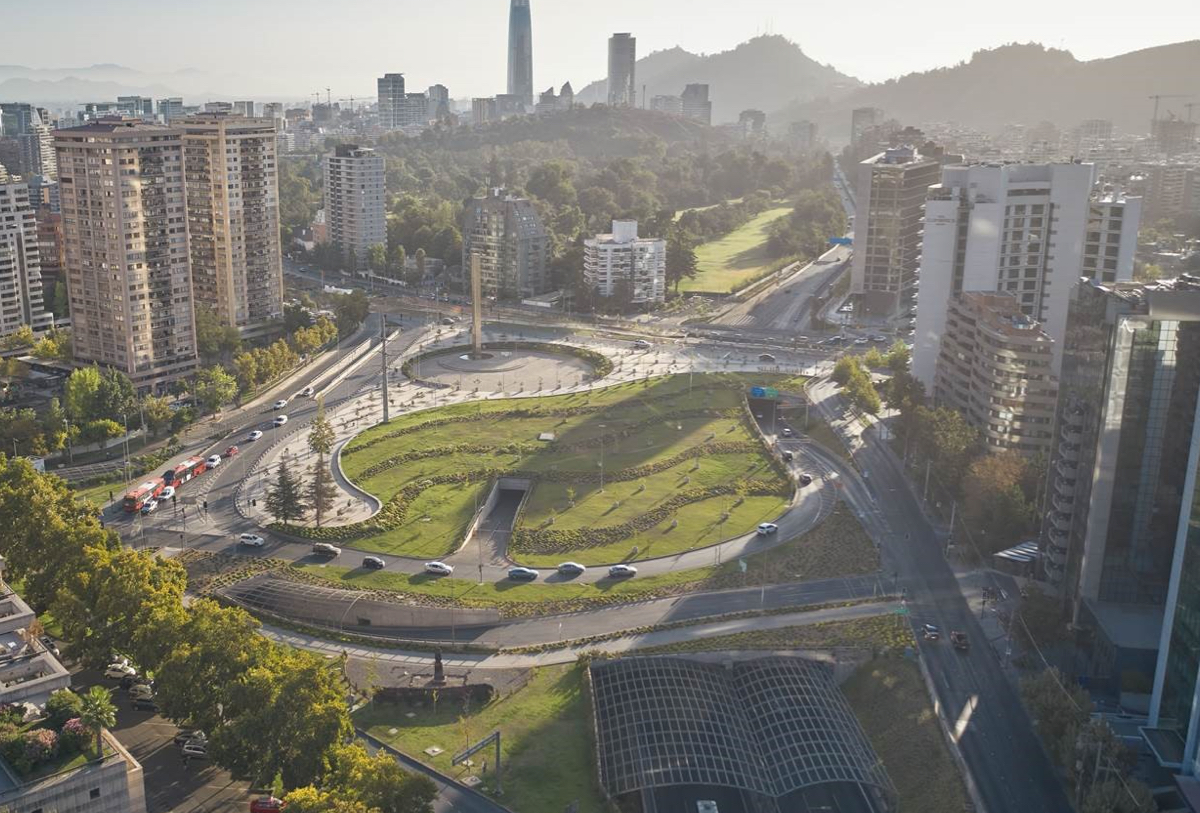Grupo Costanera and the water of Santiago: necessity and virtue

Santiago de Chile is home to more than six million people, one-third of the nation's population. Lying along the banks of the Mapocho River, the Chilean capital is a city with a frenetic and lively life, capable of combining tradition and innovation and of renewing itself profoundly by changing details. This is the case of water management in public parks, fundamental areas for the quality of life and sustainability of such an important metropolis: by implementing an advanced irrigation system in the green spaces it manages, Grupo Costanera has halved its water consumption. A goal that the scarcity and rarity of rainfall in the area make much more significant than it might seem.
Water Resources: One of Santiago's Challenges
A lively and chaotic road system to tame, with a high demand for space and the low availability of resources: the Chilean capital - like every contemporary metropolis - is in daily search of models of life and development that ensure balanced and responsible growth in the long term, on the social, economic and environmental fronts.
The management of water resources in Santiago de Chile is critical and crucial: the geography of the region and an annual average of 300 mm of rainfall (in Italy the average is 1162 mm), concentrated in just three months and with a trend of further reduction in recent years, makes water a resource not to be wasted.
Hi-tech irrigation for green areas that think about the future
With seven major infrastructure interventions, between 2014 and 2020 the Santiago Centro Oriente program (insert link to related story) - carried out by Costanera Norte, the main concessionaire of the group that manages more than 40 km of highway that cross the capital - has changed the face of the city, significantly improving the quality of city life.
With the aim of fluidifying traffic and improving the quality of city life, the metropolitan highway network has undergone a real revolution: areas previously congested by traffic have been transformed into gardens, squares and green areas for the use of citizens.
Grupo Costanera has redeveloped more than 175 hectares of land by creating gardens and parks directly integrated into the city fabric. The quality of life has clearly improved and the responsible use of water for irrigation ensures sustainable change.
Years of work have made it possible to recover and make available to the citizens 175 hectares of green areas. Grupo Costanera directly manages 150 hectares with almost 85,000 trees and shrubs (for a density of over 550 per hectare), following high criteria of environmental sustainability.
Maximum attention has been paid to water consumption, which has been reduced to a minimum thanks to the use of a digitized irrigation system that optimizes water supply and maximizes efficiency.
The concrete advantage of innovation: water consumption halved
How much is innovation worth? In the case of Santiago de Chile's green space management, quite a lot. The use of cutting-edge technology allows the company Costanera Norte to use an average of 2.4 liters/sqm per day to irrigate the public parks it manages.
Grupo Costanera, for the irrigation of the green areas it manages, uses half of the water used in other city parks.
This is a significant saving, especially from an environmental point of view, if we compare the figure with the 5 liters/sqm average consumption for public park management on the south bank of the Mapocho River and consider the low rainfall in Santiago.
By innovating its irrigation system, Grupo Costanera has been able to turn the need to fight water waste into a virtue.
